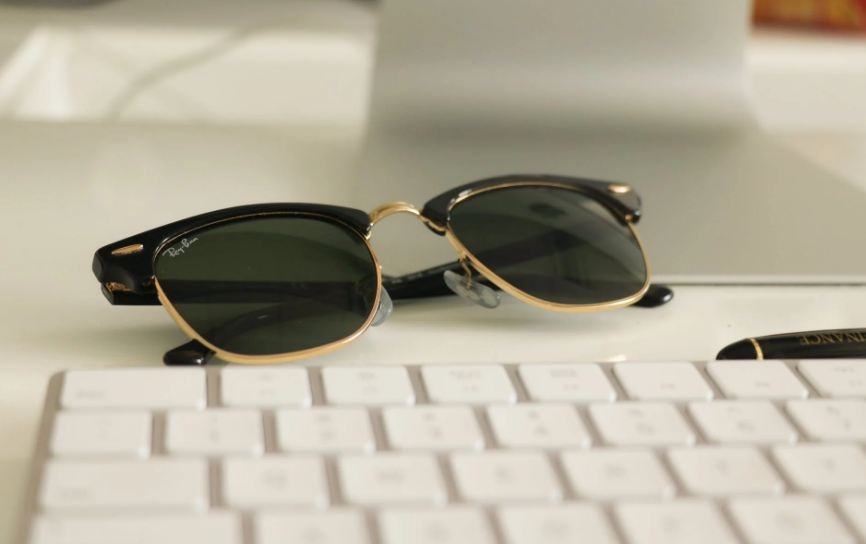Ray-Ban glasses has been a benchmark for style and authenticity in pop culture fashion since the release of the Aviator model in the 1930s. From its humble beginning, Ray-Ban glasses gradually rose to being one of the most expensive sunglasses in the world that feature both quality and style. Even movie stars could not resist Ray-Ban glasses that they sport these fashion delights in their iconic films.
Do you know that Ray-Ban glasses were born as a response to the call of pilots for glare-reducing sunglasses? That’s right! Ray-Ban glasses started as an aviation equipment until it made its way to fashion.
Birth of Aviator
Ray-Ban glasses started as an aviation equipment designed to reduce sun glare that distracted the pilots of the U.S. Air Force going for higher and farther flights. These pilots reported that they get headaches and altitude sickness due to the intense blue and white hues of the sky.
In 1929, U.S. Army Air Corps Colonel John A. Macready worked with New York-based optics manufacturer, Bausch & Lomb, to create the type of sunglasses that would address the pilots’ concerns. The prototype they created in 1936 used plastic frames and green lenses to reduce the glare without obscuring the pilots’ vision. It was named “Anti-Glare”. In 1938, the prototype’s plastic frame was replaced by a metal frame and was patented as Aviator, one of the two most popular lines of Ray-Ban sunglasses today. The Aviator used Kalichrome lenses which filter out blue light to reduce haze in misty conditions.
Shortly after launching the Aviator for use in flights, it was commercialized as an outdoor lifestyle accessory. Ray-Ban sustained its momentum in expanding its customer base by launching other models including the Shooter (designed for shooting enthusiasts) and Outdoorsman (designed for hunting and fishing enthusiasts). The people immediately loved Ray-Ban sunglasses for their bright colors and anti-reflective coating stands. Their frames are made up of seven layers of carbon fiber material which made them thin but durable.
Innovations for Progress
During World War II, American pilots relied more on Ray-Ban glasses, prompting intensive research and development which produced the gradient mirror lens. This new lens has a protective coating in the upper part and has a coat-free lower part intended for viewing the plane’s instrument panel clearly. Civilians once again showed interest in this technology leading to another wave of fashion trend. Meanwhile, the Aviator enjoyed an escalated popularity when photographs of General Douglas MacArthur wearing a pair of these sunglasses during his return to the Philippines spread around the world.
After WWII, Hollywood glam was creating a huge impact on fashion that Ray-Ban was urge to innovate once again. In 1952, the company launched the Wayfarer model, its second most popular line next to Aviator, and in 1955, Ray-Ban glasses were seen on television for the first time after James Dean sported the Wayfarer in the classic “Rebel Without a Cause” and Audrey Hepburn in the movie “Breakfast at Tiffany’s”. Ray-Ban also introduced the famous Olympian I and Olympian II models in 1969 which was sought by the public after Peter Fonda wore them in the classic “Easy Rider”.
Ray-Ban saw its most rapid growth in the 1960s as its catalogue has increased from 30 to around 50 models with styles that catered to men, women, and children. It was this time that Ray-Ban has become the world’s leading eyewear company known for its style and quality.
In the 1970s, Ray-Ban glasses innovated even further with its creation of the mirrored glasses designed for mountaineering activity and the photochromic Ambermatic lens (lens that change color depending on light conditions) designed for winter sports.
Comeback of Aviator and Wayfarer
The Aviator and Wayfarer models once again became a trend when Michael Jackson wore them at the 1984 Grammys and in his highest-attended 1987-1989 tours. The appearance of Ray-Ban glasses in various movies such as Malcom X (Denzel Washington, Clubmaster), Reservoir Dogs (Tim Roth, Clubmaster), Men in Black (Will Smith and Tommy Lee Jones, Predator), and Fear and Loathing (Johnny Depp, Shooter) further increased the hype for Ray-Ban glasses.
In 1999, Luxottica Group – an Italian eyewear conglomerate – bought Bausch & Lomb for a reported US$640 million, signifying a major shift in the company’s management. Important changes in this new era of Ray-Ban glasses include creating a unique line of sunglasses that cater to kids aged 8 to 12 years, using titanium for lightweight and durable frames, complete overhauling of the Wayfarer line, giving users the option to create their own unique shade, and utilizing carbon fiber to produce even lighter frames.
Today, Ray-Ban glasses are hand-made in Italy and China. You can tell where a pair of glasses is manufactured based on the markings on its temple. Italy-made glasses are marked “Handmade in Italy” while China-made glasses do not bear any markings. Do you know that Ray-Ban glasses are so valued that selling imitations of these products in the United States is penalized with a fine that could reach up to 25,000 dollars and imprisonment for up to 20 years?
Read Also:
Conclusion
Ray-Ban glasses trace their beginning from an aviation equipment designed to protect pilots who are into high-altitude and prolonged flights from bright sun. This marked the start of a series of innovations that would be loved eventually in pop culture fashion. For many decades, Ray-Ban proved to be a significant trendsetter in the eyewear industry.

